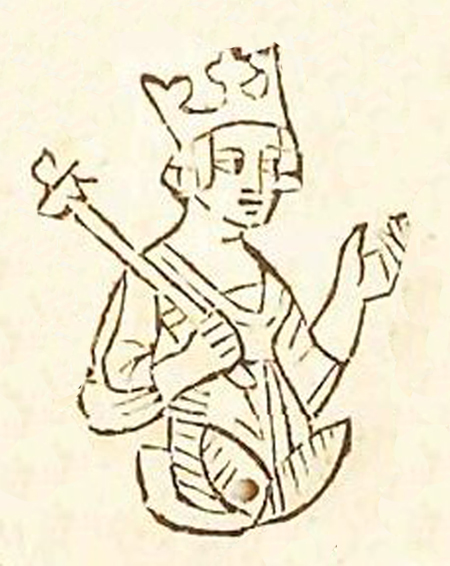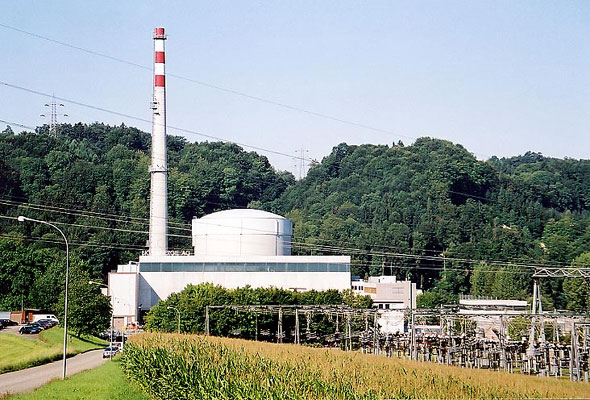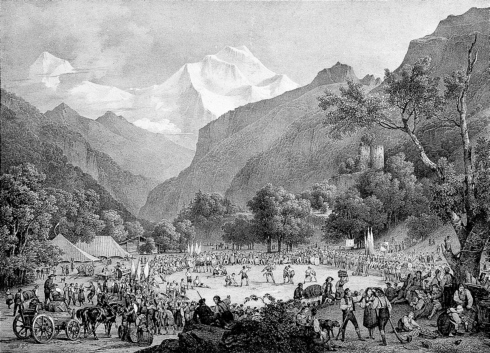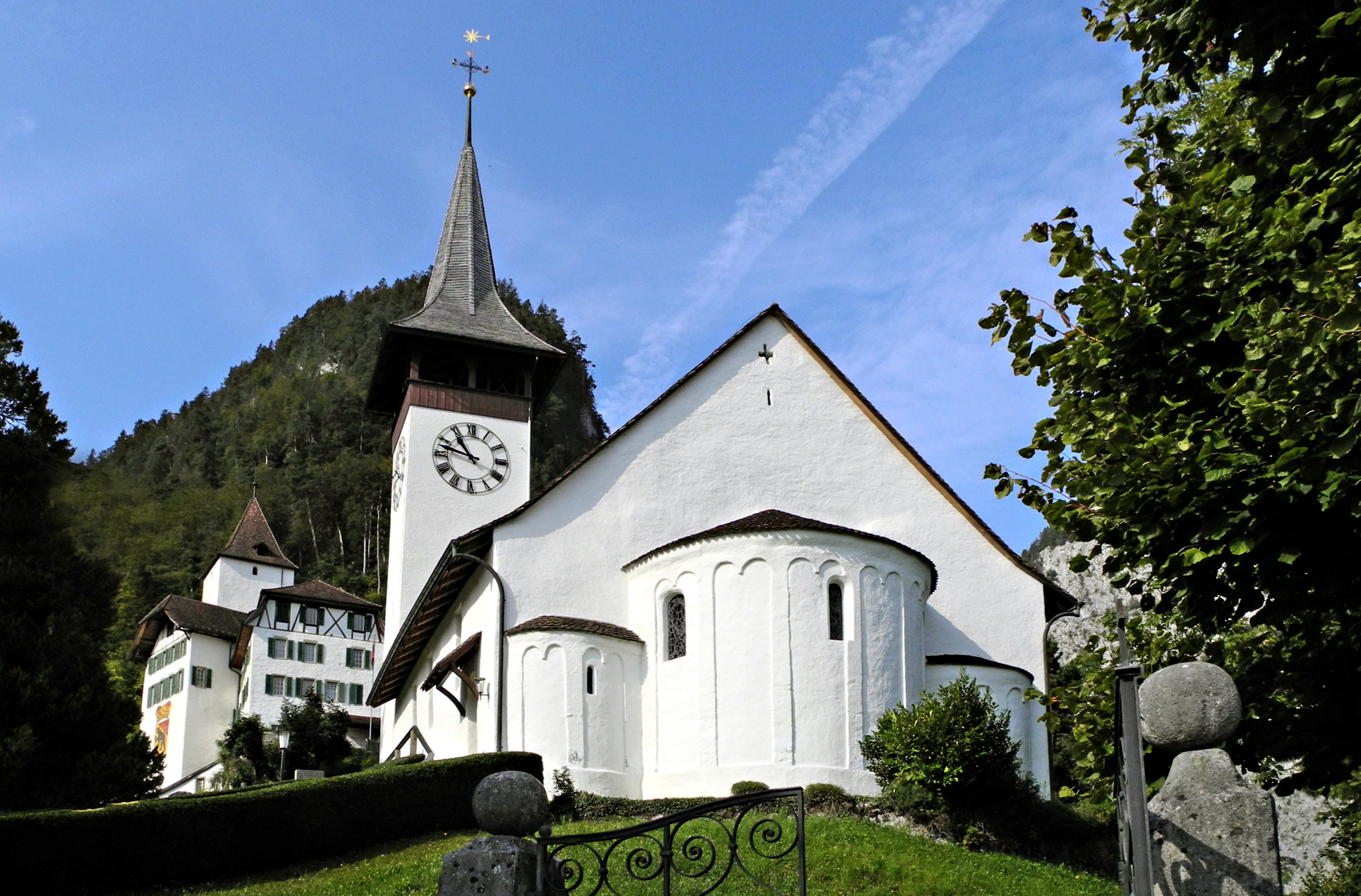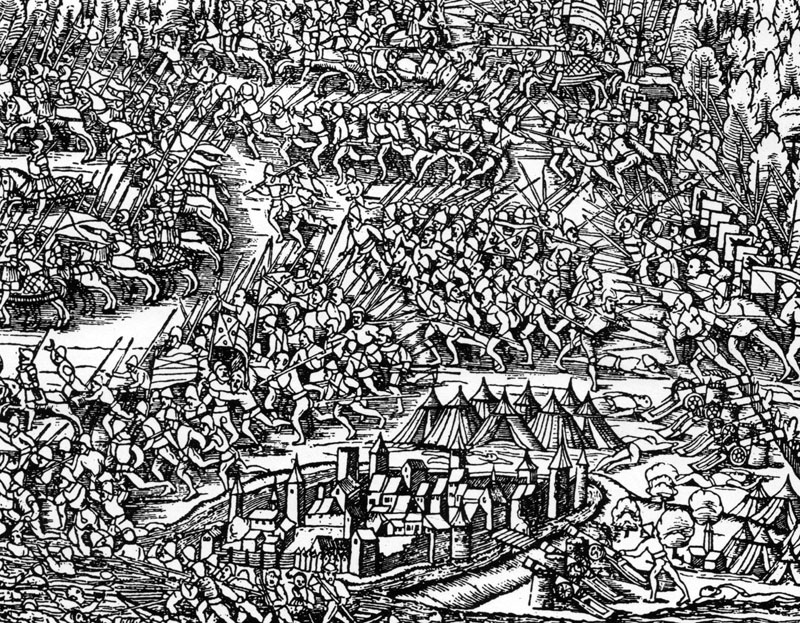|
Gümmenenkrieg
The Gümmenenkrieg was a war between the emergent city-states of Bern and Fribourg in 1331-33 in what is now Switzerland. The war pitted Bern and the new Swiss Confederation against the Habsburg-supported city of Fribourg and local nobles. It was also the first in a series of battles that brought the Habsburgs and Fribourg into prominence in the County of Burgundy. The war ended without resolving anything and led to other wars between Bern and Fribourg. History In 1324, Bern purchased the bridge-head at Laupen, which brought Bern into the Fribourg controlled Sense and Saane valleys. The city of Fribourg and a number of minor nobles became concerned about Bernese territorial ambitions and began to ally with each other. In 1331, the Lords of Weissenburg, Turn and Gruyere besieged Mülenen Castle, which was held by a pledge against a loan by a citizen of Bern. Bern responded to the siege aggressively and called on its allies, Solothurn, Biel and Murten. The combined Bernese arm ... [...More Info...] [...Related Items...] OR: [Wikipedia] [Google] [Baidu] |
Agnes Of Austria (1281–1364)
Agnes of Austria (18 May 1281 – 10 June 1364) was Queen of Hungary by marriage to Andrew III of Hungary. Life She was a daughter of Albert I of Germany and his wife Elisabeth of Tirol. She was Queen of Hungary by marriage. She was a member of the House of Habsburg. Queen On 13 February 1296 in Vienna, Agnes married Andrew III of Hungary. Afterwards, with his father-in-law's support, Andrew managed to defeat the revolt of Miklós Kőszegi and Máté Csák III, and occupy the castles of Kőszeg and Pozsony. In 1298 Andrew supported with troops his father-in-law's revolt against King Adolf of Germany Adolf (c. 1255 – 2 July 1298) was the count of Nassau from about 1276 and the elected king of Germany from 1292 until his deposition by the prince-electors in 1298. He was never crowned by the pope, which would have secured him the imperial .... Agnes disliked tournaments, but liked sermons. Since she was small of stature, she used to wear dresses her sisters no longer ... [...More Info...] [...Related Items...] OR: [Wikipedia] [Google] [Baidu] |
Canton Of Bern
The canton of Bern or Berne (german: Kanton Bern; rm, Chantun Berna; french: canton de Berne; it, Canton Berna) is one of the 26 cantons forming the Swiss Confederation. Its capital city, Bern, is also the ''de facto'' capital of Switzerland. The bear is the heraldic symbol of the canton, displayed on a red-yellow background. Comprising ten districts, Bern is the second-largest canton by both surface area and population. Located in west-central Switzerland, it is surrounded by eleven cantons. It borders the canton of Jura and the canton of Solothurn to the north. To the west lie the canton of Neuchâtel, the canton of Fribourg and canton of Vaud. To the south lies the canton of Valais. East of the canton of Bern lie the cantons of Uri, Nidwalden, Obwalden, Lucerne and Aargau. The geography of the canton includes a large share of all three natural regions of Switzerland: the Jura Mountains (the Bernese Jura), the Swiss Plateau (the Bernese Mittelland) and the Alps (th ... [...More Info...] [...Related Items...] OR: [Wikipedia] [Google] [Baidu] |
Mühleberg
Mühleberg is a municipality in the Bern-Mittelland administrative district in the canton of Bern in Switzerland. History Mühleberg is first mentioned in 1011–16 as ''Mulinberg''. There are several Hallstatt era grave mounds around Mühleberg; the most important is the so-called ''Unghürhubel'' (monster hill). At ''Unghürhubel'' in 1869, an ornamented choker made of heavy gold plate and a gold bracelet or strip with four rows with half-moon shapes were discovered. A number of other less valuable artifacts and metal items were probably destroyed during the excavation. The church and village of Mühleberg belonged to a cadet branch of the von Buch family starting in 1387. It was then owned by the Brüggler family (starting in 1440) and the Herren family (in 1579), who sold it to Bern in 1599. It was combined with several other small estates and placed under the bailiwick of Laupen. St. Martin's Church was first mentioned in 1224, though it was originally a romanesque aisle ... [...More Info...] [...Related Items...] OR: [Wikipedia] [Google] [Baidu] |
Unspunnen Castle
Unspunnen Castle is a castle, now in ruins, located in the Municipalities of Switzerland, municipality of Wilderswil in the Bernese Highlands of Switzerland. The castle, likely constructed in the early 12th century, overlooks the city of Interlaken. Today, Unspunnen is home to ''Unspunnenfest'', a festival of traditional Swiss competitions held in the fields below the ruins. History The castle was the center of a 13th-14th century fief of an Bernese Oberland, Oberland barons, though the name of the barons or the castle builder is unknown. The cave castle of Rotenfluh (first mentioned in 1298 as ''munitio immersive balma Rothenfluo dicta'') at Tschingelsatz and Unspunnen Castle (first mentioned in 1232 as ''Uspunnun'') were used to guard the Late Middle Ages, late medieval ''Lütschinenbrücke'', a bridge at Gsteig bei Gstaad, Gsteig near Interlaken. In the 13th Century it belonged to the ''Herrschaft (territory), Herrschaft'' of Burkart of Thun, who acquired it through his 122 ... [...More Info...] [...Related Items...] OR: [Wikipedia] [Google] [Baidu] |
Wimmis
Wimmis is a municipality in the Frutigen-Niedersimmental administrative district in the canton of Bern in Switzerland. History Wimmis is first mentioned in 994 as ''Windemis''. The oldest traces of a settlement in Wimmis include the Mesolithic and Bronze Age settlements on the Chienberg and the Bronze Age and High Middle Ages settlements on the Pintel. Roman era artifacts were found at Engfeld and bronze statue of Emperor Gordian III was found at Tägerstein. The area remained inhabited during the Middle Ages and in 994 King Otto III granted his estates in Wimmis to Selz Abbey. By the 12th or 13th century the Lords of Wimmis or Strättligen built Wimmis Castle above the village. The exact relationship between the two families is unclear, but the Wimmis line became extinct in the mid-13th century and by 1260 the Freiherr von Strättligen owned Wimmis Castle and the surrounding lands. A few years later the castle and lands were incorporated into the extensive holdings of t ... [...More Info...] [...Related Items...] OR: [Wikipedia] [Google] [Baidu] |
Barons Of Weissenburg
Weissenburg Castle (german: Ruine Weissenburg) is a ruined castle in the municipality of Därstetten of the Canton of Bern in Switzerland. History In 1175 the Freiherr von Weissenburg was first mentioned as a land holder and vassal of Duke Berthold IV of Zähringen. Whether they had a castle at this time is not recorded. When he assumed the title in 1259, Rudolf III of Weissenburg expanded and repaired Weissenburg Castle to its full size. Beginning in the 13th century, the Weissenburgs began to expand their Herrschaft. Around 1250 they added Wimmis to their territory, followed by Weissenau Castle in Unterseen and the villages of Rothenfluh and Balm a few years later. However, Rudolf III sought closer relations with the Habsburgs which made an enemy of the nearby town of Bern. In 1288 he lost a battle at Wimmis against Bern and the village was plundered. Ten years later he quarreled with the Habsburgs and the Counts of Neu-Kyburg and lost control over the Rothenfluh and ... [...More Info...] [...Related Items...] OR: [Wikipedia] [Google] [Baidu] |
Aeschi
Aeschi is a municipality in the district of Wasseramt in the canton of Solothurn in Switzerland. Burgäschisee is a lake in the forest on the border with Seeberg. Geography Aeschi has an area, , of . Of this area, or 63.2% is used for agricultural purposes, while or 17.4% is forested. Of the rest of the land, or 14.5% is settled (buildings or roads), or 4.2% is either rivers or lakes and or 1.1% is unproductive land.Swiss Federal Statistical Office-Land Use Statistics 2009 data accessed 25 March 2010 After the 2012 merger, the area increased to . Of the built up area, housing and buildings made up 8.7% and transportation infrastructure made up 3.9%. while parks, green belts and sports fields made up 1.1%. Out of the forested land, all of t ... [...More Info...] [...Related Items...] OR: [Wikipedia] [Google] [Baidu] |
Grasburg Castle
Grasburg Castle is a ruined castle in the municipality of Schwarzenburg of the Canton of Bern in Switzerland. It is the largest castle ruin in the Canton of Bern. It is a Swiss heritage site of national significance. History According to legend, the first castle on the site was built by a Roman hunter who saw the massive sandstone spire on an island in the Sense river. He saw a red deer on the cliff over the river and went to catch it. As he rode after the deer a dragon roared out of a cave, but the hunter quickly killed the dragon. The deer then walked up to the hunter and offered his life to the hunter. The hunter allowed the deer to go free and the deer gave him possession of the area. The hunter than built the first castle on the top of the sandstone spire on the island. A bridge was built over the river and became part of the Roman road from Aventicum. The legend continues that after the Roman Empire collapsed, a Walliser robber took over the old Roman castle as a ... [...More Info...] [...Related Items...] OR: [Wikipedia] [Google] [Baidu] |
Murten
Murten (German language, German) or Morat (French language, French, ; frp, Morât ) is a bilingual Municipalities of Switzerland, municipality and a city in the See (district of Fribourg), See district of the Cantons of Switzerland, canton of Fribourg (canton), Fribourg in Switzerland. It is located on the southern shores of Lake Morat (also known as Lake Murten). Morat is situated between Neuchâtel and Fribourg and is the capital of the See/Lac District of the canton of Fribourg. It is one of the municipalities with a majority (about 75%) of German speakers in the predominantly French-speaking Canton of Fribourg. On 1 January 1975 the former municipality of Burg bei Murten merged into the municipality of Murten.Nomenklaturen – Amtliches Gemeindeve ... [...More Info...] [...Related Items...] OR: [Wikipedia] [Google] [Baidu] |
Biel
, french: Biennois(e) , neighboring_municipalities= Brügg, Ipsach, Leubringen/Magglingen (''Evilard/Macolin''), Nidau, Orpund, Orvin, Pieterlen, Port, Safnern, Tüscherz-Alfermée, Vauffelin , twintowns = Iserlohn (Germany) Biel/Bienne (official bilingual wording; , ) is a town and a municipality in the Biel/Bienne administrative district in the canton of Bern in Switzerland. Biel/Bienne lies on the language boundary between the French-speaking and German-speaking parts of Switzerland, and is bilingual throughout. ''Biel'' is the German name for the town; ''Bienne'' its French counterpart. The town is often referred to in both languages simultaneously. Since 1 January 2005, the official name has been "Biel/Bienne". Until then, the town was officially named Biel. The town lies at the foot of the first mountain range of the Jura Mountains area, guarding the only practical connection to Jura, on the northeastern shores of Lake Biel (, ), sharing the eastern ... [...More Info...] [...Related Items...] OR: [Wikipedia] [Google] [Baidu] |
